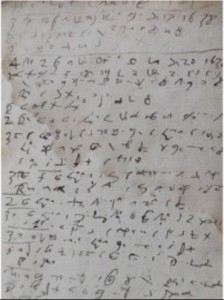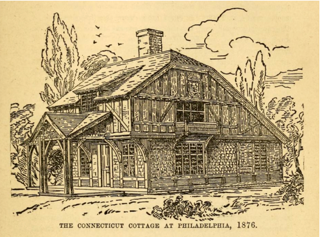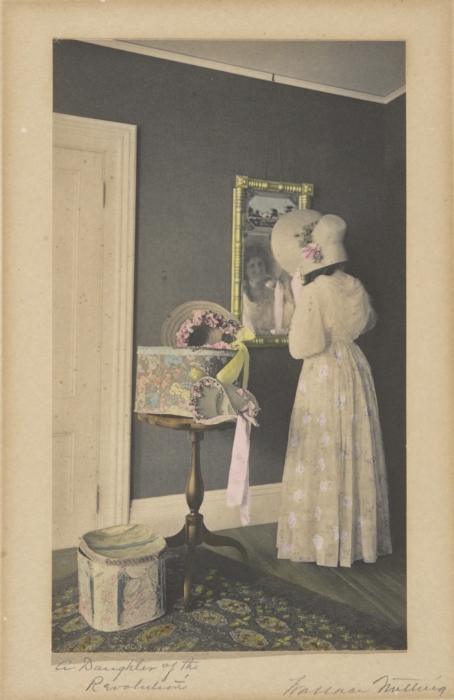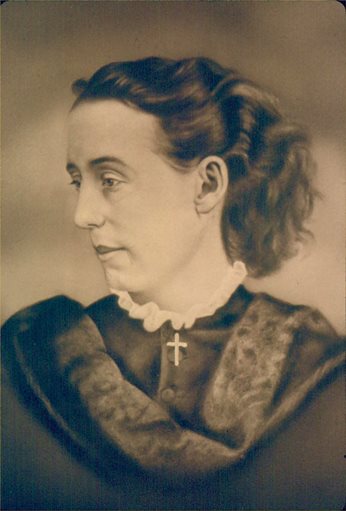Members of the UConn women’s basketball team released a statement on Sunday speaking out and advocating for the black community.
from Sports https://www.ctpost.com/uconn/article/UConn-athletes-coaches-speak-out-against-racial-15306984.php
Members of the UConn women’s basketball team released a statement on Sunday speaking out and advocating for the black community.
from Sports https://www.ctpost.com/uconn/article/UConn-athletes-coaches-speak-out-against-racial-15306984.php
Recent residential sales in New York City and the region.
from Connecticut https://www.nytimes.com/2020/05/31/realestate/homes-that-sold-for-around-450000.html
By Diana McCain for Your Public Media
“The foundation of authority is laid firstly in the free consent of people.” That principle lies at the heart of the representative system by which the United States has governed itself for more than two centuries.
But when the Reverend Thomas Hooker declared those words in a sermon in Hartford on May 31, 1638, they were a radical concept. In 1638 almost all the nations of the world were governed by monarchs, emperors, tsars, and others who wielded power secured by inheritance or conquest. Ordinary people had little, and usually no, voice in selecting their leaders or making their laws.
The Puritans whom Thomas Hooker had led to settle in Hartford just a few years earlier based everything in their lives on the Bible. Thomas Hooker believed that in the Bible God granted the people the right to select those who would govern them and the power to establish limitations on those individuals.

Page from Henry Wolcott Jr.’s shorthand notebook of sermons delivered in Hartford, Windsor, and New Haven between 1638 and 1641 – Connecticut Historical Society,
Less than a year later those democratic concepts were put into practice. In January of 1639 the settlements at Windsor, Hartford, and Wethersfield united under a framework of government known as the Fundamental Orders. Under the Orders, citizens elected representatives to a legislature that would enact the laws of the land. The governor was elected as well.
We know the momentous words Thomas Hooker spoke on that May day 375 years ago from notes taken in an early version of shorthand by a man who heard them uttered, Henry Wolcott, Jr. of Windsor.
Diana Ross McCain was formerly the Head of the Connecticut Historical Society Research Center and author of the books It Happened in Connecticut, Connecticut Coast: An Illustrated History, Mysteries and Legends of New England, and a biography of Connecticut’s official state heroine, To All on Equal Terms: The Life and Legacy of Prudence Crandall.
© Connecticut Public Broadcasting Network and Connecticut Historical Society. All rights reserved. This article originally appeared on Your Public Media.
from Connecticut History | a CTHumanities Project https://connecticuthistory.org/the-free-consent-of-the-people-thomas-hooker-and-the-fundamental-orders/
Joel Barlow junior shortstop Abby Ota has been named Gatorade’s State Softball Player of the Year. She has maintained a 3.11 grade point average.
from Sports https://www.ctpost.com/sports/highschool/article/Barlow-s-Ota-named-State-Gatorade-Softball-15305431.php
By Briann Greenfield
A cultural movement as well as an architectural and decorating style, the Colonial Revival of the late 19th and early 20th centuries was inspired by a romantic veneration of the early American past. Enthusiasts sought to bring what they believed to be traditional values and aesthetics into contemporary life by preserving old buildings and artifacts, staging reenactments of historic events, manufacturing new goods in past styles, and creating works of art and literature depicting early American scenes.
The Colonial Revival was national in its scope, but as a state rich in historic resources, Connecticut became inextricably linked with the movement, supplying both symbolic imagery and active adherents. Although interest in the colonial era persists today, the heyday of the Colonial Revival occurred as rapid urbanization, industrialization, and immigration encouraged many Americans to seek refuge in the perceived simplicity of the past.

The Connecticut Cottage at the 1876 Centennial Exhibition
Most scholars tie the emergence of the Colonial Revival to the 100th anniversary of the signing of the Declaration of Independence. Americans marked the milestone with the Centennial International Exhibition of 1876, the first official world’s fair in the United States, held in Philadelphia, a city with its own rich colonial past. With displays of American manufacturing, the fair celebrated the nation’s rush to progress, but its exhibits also provided many comparisons to the past. Among these was Connecticut’s state building, the “Connecticut Cottage.” Designed in the style of a half-timbered medieval structure, the house would not conform to modern knowledge of colonial-era Connecticut architecture. But visitors to the world’s fair recognized it as historic and were assisted in that judgment by the placement of an old-fashioned well-sweep (a device for raising and lower water buckets) in the front yard. The interior also included relics of the past: a gun that had belonged to Revolutionary War hero General Israel Putnam, an antique tall clock, relics of the Charter Oak, and what would become the icon of the Colonial Revival, a spinning wheel positioned in front of the fireplace.
Artists and writers working in Connecticut helped bring such idealized images of early American life to a wider public. Writers such as Harriet Beecher Stowe set stories in puritan New England. Similarly, Impressionists Childe Hassam, Willard Metcalf and Adelaide Deming created bucolic scenes based on New England landscapes. Often, they depicted old homes in Lyme or Litchfield, the latter of which had created a comprehensive plan in 1913 to remodel or rebuild all public and business buildings in colonial styles.

Reenactors at 1908 Bulkeley Bridge dedication recreate Thomas Hooker’s 1636 landing – Connecticut Historical Society and Connecticut History Online
In most cases, participants in the Colonial Revival were more concerned with preserving the spirit of the past than with strict adherence to historical accuracy. Proponents also drew their inspiration widely, not limiting their enthusiasm for the past to the period when Connecticut was a British colony but embracing the early national period as well. Geography was not a barrier either. When pioneering female architect Theodate Pope Riddle collaborated with the architectural firm of McKim, Mead & White in 1898 to build a sprawling summer retreat for her parents in Farmington, Connecticut, she used Mount Vernon’s southern architecture as her model.
Likewise, Colonial Revival enthusiast might graft visions of the past on to distinctly contemporary events. The dedication of Hartford’s Bulkeley Bridge in 1908, for example, was marked by three days of celebrations, including a reenactment of Thomas Hooker’s historic 1636 landing in Hartford. Men, women and children dressed as Puritans to recreate that landing, which is an early and treasured story in the founding of the Connecticut colony.
Still, this interest in the colonial past proved to be good news for preservation of the state’s historic resources. For example, the state’s first historic house museum was founded in 1891 when the Connecticut chapter of the Sons of the American Revolution preserved a former store and office in which Governor Jonathan Trumbull planned the defense of the Connecticut colony during the Revolutionary War.
The Sons’ sister organization, the Daughters of the American Revolution, preserved the Oliver Ellsworth Homestead (built in 1781) in 1903 and Putnam Cottage (built circa 1690) in 1906. In the 1920s, Connecticut members of the Colonial Dames completed an extensive architectural survey of the state’s colonial and early national buildings that included architectural drawings created by preservationist architect J. Frederick Kelly. By 1933 the state could boast 23 historic house museums, all but one having been built in 1800 or earlier.
Similarly, antique collectors also located, identified and preserved examples of early American craft. Among the earliest of these collectors were Hartford’s Walter Hosmer, a furniture upholster, and Dr. Irving W. Lyon, author of The Colonial Furniture of New England (1891), the first book-length scholarly study of American furniture. Others included Henry Wood Erving, a chairman of the Connecticut River Banking Company credited with discovering a class of richly carved chests indigenous to the Connecticut River Valley; Wallace Nutting, an entrepreneur whose business ventures included a chain of historic house museums, photographs of staged colonial scenes, and a line of reproduction furniture; and George Dudley Seymour, a flamboyant collector whose passion for history was fueled by his devotion to the memory of Revolutionary War captain Nathan Hale. Such collectors helped establish the study of American decorative arts and create important museum collections including those of the Wadsworth Atheneum Museum of Art, the Connecticut Historical Society, and the Metropolitan Museum of Art.

Wallace Nutting, A Daughter of the Revolution, Hand-colored photogravure, 1904 – Yale University Art Gallery
Politically, the Colonial Revival was conservative in its leanings. The ancestor-worshipping lineage associations that proliferated beginning in the 1890s worked to preserve the status of old Yankee families during a period of high immigration. Often associated with Revolutionary War heroes or Connecticut statesmen, historic house museums promoted patriotism and respect for government institutions.
Similarly, at a time when many women were organizing for the vote, Wallace Nutting’s popular photographic prints depicted women in traditional roles as genteel ladies and productive housewives. But the real women who worked to preserve historic buildings during the Colonial Revival did not restrict themselves to the domestic sphere. To carry out their ambitious plans, they took on the very public roles of organizers, spokespersons, and fund-raisers. This is certainly true of Emily Seymour Goodwin Holcombe, whose extensive work as a preservationist included restoring Hartford’s Ancient Burying Ground in 1896 and saving the Connecticut Old State House from demolition in 1909.
As much as the Colonial Revival idealized the past, it also did much to facilitate the introduction of modern modes of living. In the area of aesthetics, it replaced the fussiness of Victorian design with simpler, almost streamlined, shapes. Colonial Revival motifs could be applied to modern building forms, as in the case of the skyscraper built for the Hartford-Connecticut Trust Company in 1920.
Colonial-styled commodities also fueled the burgeoning consumer culture of the 1920s. Connecticut firms such as Nathan Margolis, Robbins Brothers, and Hitchcock produced furniture in early American styles. Such goods were readily displayed in modern, single-family suburban homes, themselves often adorned with colonial motifs. Indeed, Colonial Revival architecture and interior décor became so closely tied to Connecticut’s suburbs that when the fictional television couple Lucy and Ricky Ricardo moved to Connecticut in 1957, the sixth and final season of I Love Lucy, their new home was Colonial Revival.
Briann Greenfield, PhD, is the former coordinator of the public history program at Central Connecticut State University and current executive director of the Harriet Beecher Stowe Center.
from Connecticut History | a CTHumanities Project https://connecticuthistory.org/the-colonial-revival-movement-sought-stability-during-time-of-change/
What does the pandemic mean for long-term efforts to remake our economy in a sustainable way? Yale experts recently considered the possibilities.
from Business https://insights.som.yale.edu/insights/faculty-viewpoints-will-covid-19-set-us-on-more-sustainable-path
Alex Stiegler, a star pitcher and infielder for the Yale baseball team, is heading to Boston College in the fall as a graduate transfer. Dai Dai Otaka, a senior infielder, will do the same at Johns Hopkins.
The NCAA granted an extra year of eligibility to all spring sports athletes whose seasons were cut short due to the COVID-19 pandemic. Yale ruled against eligibility for fifth-year seniors, forcing those interested in continuing their college careers to look elsewhere.
Stiegler, Yale’s captain, should make an immediate impact at Boston College. The Dallas native was first-team all-Ivy League as a junior, striking out 76 batters in 76 innings. He made the NCAA Corvallis Regional team as a freshman, when Yale knocked off Nebraska and Holy Cross before losing to top-ranked Oregon State. He was batting .318 this spring when the season was canceled after 10 games.
Otaka, from Novi, Michigan, was hitting .375 when the season was canceled. A shortstop and second baseman, he was considered one of the top defensive infielders in the Ivy League.
WANGER AN ALL-AMERICAN
Benny Wanger, a pitcher/first baseman who graduated in 2019 from Yale, spent this spring as a grad transfer at the University of Southern California. The two-way star was in the midst of a monster season, leading the Trojans in hitting and ERA when the season was called.
The Newton, Mass. native was hitting .410, fifth-best in the Pac-12 Conference, with five extra base hits and eight RBIs. He’d also not allowed a run in six relief appearances with three saves, including back-to-back saves in wins over No. 22 TCU and No. 2 Vanderbilt.
Earlier this week, he was named second-team All-American by Collegiate Baseball.
Wanger,…
from Sports https://www.ctpost.com/sports/article/Yale-s-Stiegler-Otaka-to-do-grad-years-at-15304257.php
Pope Francis has credited a 2015 miracle to the Rev. Michael J. McGivney, a Connecticut priest who died in 1890 during an outbreak that researchers now believe may have been caused by a coronavirus.
from Connecticut https://www.nytimes.com/2020/05/28/nyregion/father-mcgivney-sainthood-coronavirus.html
Born in Marlborough, Connecticut, in 1843, Mary Hall had no idea, growing up the daughter of a farmer, that she would one day revolutionize the legal profession in Connecticut. In 1866 she graduated from Wesleyan Academy in Wilbraham, Massachusetts, and became a teacher. A believer in equal opportunities for women, she attended a woman suffrage convention in Hartford that set her on a new and radical career path.

Mary Hall – Richmond Memorial Library, Marlborough
At the convention she heard esteemed Hartford attorney John Hooker give a talk about the restricted property rights of married women. Inspired by Hooker’s speech, Hall decided to study law (at a time before Connecticut had any female attorneys). She began studying in her brother’s legal practice, but after his death, Hall found herself without a mentor. It was then that John Hooker, clerk of the Supreme Court of Errors in Connecticut, took Hall in as an apprentice. Hall studied under Hooker for four years.
In May of 1882, Hall applied for admission to the Connecticut bar. The local US district attorney and three other lawyers administered her exam, and felt she deserved to pass, but deferred to the state court system to make the final decision as to the legality of admitting a female attorney to the bar. In July of 1882, the Connecticut Supreme Court cleared the way for women to practice law in Connecticut by making Mary Hall the state’s first female attorney.
Hall went into practice and specialized in assisting women with wills and cases concerning property rights. She practiced for approximately 40 years and became the state’s first female notary in 1884.
In 1902, Hall founded the Good Will Club, an organization that sought housing for wayward boys. She later established a camp for these children in her hometown of Marlborough and even wrote the first book on Marlborough’s history in 1903. A leader in the suffragist movement, she passed away in 1927 at the age of 84, just seven years after witnessing the ratification of the 19th amendment—guaranteeing women the right to vote.
from Connecticut History | a CTHumanities Project https://connecticuthistory.org/mary-hall-connecticuts-first-female-attorney/
Three female high school students in Connecticut had challenged a scholastic sports policy that allows transgender athletes to compete against them in track.
from Connecticut https://www.nytimes.com/2020/05/29/us/connecticut-transgender-student-athletes.html